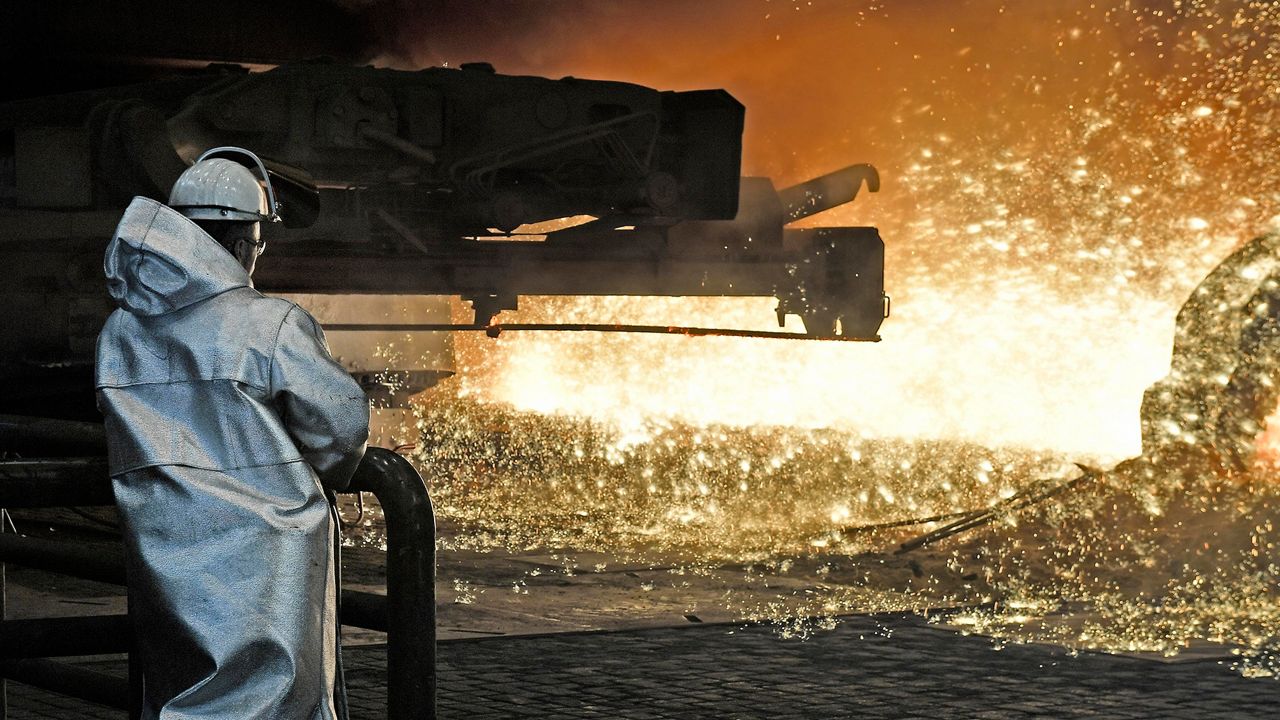OHIO — A recent report shows living near coal-based steel mills or coke plants can have profound health effects, including for those who reside by one in Ohio.
The report from Industrious Labs, a climate nonprofit, used data from public databases for its findings, including from the National Emissions inventory, the Toxics Release Inventory and steel industry and trade reports. The research broke down data facility-by-facility in Ohio, Michigan, Virginia, Pennsylvania and Illinois.
In the U.S., there are just seven remaining coal-based steel plants and 10 coke plants in operation as of this year. Coke is a coal-based fuel with a high carbon content, according to the research.
Overall, the report found that coal-based steel mills and coke plants have caused up to an estimated 892 premature deaths, 250,500 cases of asthma symptoms and $13.2 billion in health costs each year, according to the EPA’s 2020 National Emissions Inventory.
The steelmaking process results in pollutants being released into the air due to combustion and the series of chemical reactions associated with it. Those pollutants pose a risk to the workers at the plants, the surrounding community and the environment, the report states.
Using the 2020 EOA National Emissions Inventory, the 17 plants combined released the following number of pollutants:
- 24,400 tons of nitrogen oxide (NOx)
- 32,000 tons of sulfur dioxide (SO2)
- 9,000 tons of fine particulate matter
- 177,000 tons of carbon monoxide (CO)
- 7 tons of lead
How specific pollutants affect people and the environment:
- Nitrogen oxides can cause asthma, other respiratory conditions and cardiovascular problems. It can also cause acid rain, which in turn affects wildlife, vegetation and ecosystems
- Sulfur dioxide can reduce respiratory and lung function, damage trees, create a haze that impacts visibility, and can also produce acid rain
- Fine particulate matter is leading cause of respiratory and cardiovascular problems. It can also reduce nutrients in soil and water
- Carbon monoxide can be dangerous when exposure happens indoors with lack of ventilation. It can cause dizziness, confusion and can make people fall unconscious
- Lead can cause kidney and cardiovascular problems once inhaled. It can also harm the immune, nervous, reproductive and developmental systems
Here’s how Ohio’s steel and coke plants ranked against more than 656 major polluters in the state:
The report goes on to call on the EPA and state agencies to enforce and strengthen environmental laws and emission limits.
Additionally, the report states the most long-term solution is to transition away from coal-based steelmaking.
Highlighted in the report is Cleveland-Cliffs’ Middletown Works, which is set to transition from coal-based to hydrogen-ready steelmaking. Hydrogen-powered direct reduced iron and electric arc furnaces are ways to help eliminate the need for coal, the report explained. It would also cut the number of pollutants emitted each year.
Researchers said a way for these transitions to happen is to receive investment from historical tax incentives and federal funding.
If the reliance on coal and coke plants continue, the report goes on to say “longstanding harms will also persist into the future.” Additionally, researchers said closing plants or downsizing operations at these plants aren’t the answer, as they would take away from union jobs and send steel productions into other regions.
Instead, the report encourages to start replacing blast furnaces with technology that would emit fewer pollutants.
“For blast furnaces to keep operating, the inner lining that is capable of withstanding extremely high operating temperatures has to be replaced about every 15- 20 years,” the report states. “Plants face upcoming investments with a typical cost of $150-300 million per furnace to the company, and decades more of dangerous pollution for the community.”
Overall, the report calls for a transition to technology that would encourage clean air and renewable energy.
“Moving rapidly in this direction is a health and environmental imperative that also provides opportunities for industry growth, economic resilience, and job creation. The time for action is now,” the report states.
To read the full report, click here.





